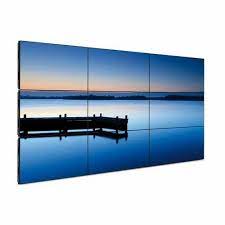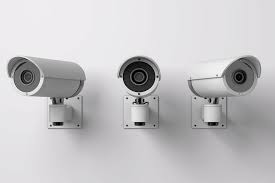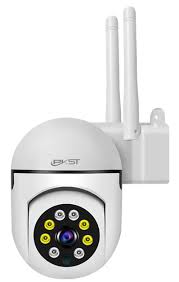A video wall is a powerful and visually captivating display solution that has revolutionized the way we present information and engage with audiences. Comprised of multiple screens seamlessly tiled together to form a larger display, video walls have become increasingly popular in various industries such as retail, entertainment, command centers, corporate offices, and educational institutions.
One of the key advantages of a video wall is its ability to create an immersive viewing experience. By combining multiple screens, it offers a significantly larger canvas for showcasing content compared to traditional single-screen displays. This allows for stunning visuals, vibrant colors, and high-resolution images that can grab attention and leave a lasting impact on viewers.
Video walls are highly versatile and can be customized to fit any space or requirement. Whether it’s a small control room or a large auditorium, video walls can be configured in different sizes and layouts to suit specific needs. From standard rectangular configurations to curved or irregular shapes, the flexibility of video walls ensures that they can adapt to any environment.
The applications of video walls are vast and varied. In retail settings, they serve as eye-catching digital signage for advertising products or displaying promotional content. Video walls in command centers provide real-time data monitoring and situational awareness for effective decision-making. In educational institutions, they enhance learning experiences by delivering dynamic visual content that captures students’ attention.
Furthermore, the content management capabilities of video walls make them an ideal tool for engaging audiences. With advanced software solutions, users can easily control and schedule content playback across different screens simultaneously. This enables seamless transitions between videos, images, live feeds, social media streams, and interactive elements like touchscreens or gesture control.
Another advantage of video walls is their scalability. As technology advances and new display technologies emerge, it is relatively easy to upgrade or expand existing video wall installations without significant disruption or cost implications. This ensures that businesses can stay up-to-date with the latest trends in visual communication without having to invest in an entirely new display system.
In conclusion, video walls have become an essential component of modern communication and visual display strategies. Their ability to create immersive experiences, engage viewers, and deliver impactful content makes them a valuable asset in various industries. With their versatility, scalability, and advanced management features, video walls are shaping the way we present information and captivate audiences in today’s digital age.
9 Essential Tips for Setting Up a Video Wall
- Make sure you have the right equipment, such as a high-resolution video wall controller, for your video wall display.
- Consider the size of the space where your video wall will be installed and plan accordingly to ensure that it fits properly.
- Consider using an interactive touch screen with your video wall to allow users to interact with content displayed on the screen.
- Utilize a professional installation service to ensure that your video wall is properly mounted and secured in place.
- Use high-quality cables for connecting all components of your video wall system together for optimal performance and reliability.
- Design content specifically for viewing on a large format display like a video wall, rather than simply scaling up existing content designed for smaller displays or projectors .
- Use software that allows you to easily manage multiple screens in one interface, such as creating layouts and distributing content across multiple screens simultaneously .
- Calibrate each display within the array regularly to maintain consistent color accuracy across all monitors in the array .
- Invest in a good quality power supply unit (PSU) that can handle powering several displays at once without causing any voltage drops or surges which could damage your equipment .
Make sure you have the right equipment, such as a high-resolution video wall controller, for your video wall display.
When it comes to setting up a video wall display, having the right equipment is crucial for achieving optimal performance and visual impact. One key component that you should pay close attention to is the video wall controller.
A high-resolution video wall controller acts as the brain of your video wall system. It is responsible for processing and distributing content across multiple screens, ensuring seamless synchronization and smooth playback. Without a reliable video wall controller, your video wall may suffer from issues like image misalignment, lag, or poor image quality.
Investing in a high-resolution video wall controller that matches the specifications of your video wall display is essential. The controller should be capable of handling the resolution and size of your screens, as well as supporting the content formats you intend to showcase. This will ensure that your video wall operates at its full potential, delivering stunning visuals and captivating viewers.
Additionally, consider choosing a video wall controller that offers advanced features such as real-time monitoring, remote management capabilities, and easy content scheduling. These features can significantly enhance the usability and efficiency of your video wall system.
Before making a purchase, consult with experts or reputable suppliers who can guide you in selecting the right video wall controller for your specific needs. They can help you understand technical specifications, compatibility requirements, and provide valuable recommendations based on their expertise.
Remember that investing in high-quality equipment may come with a higher upfront cost but can save you from potential headaches and expenses in the long run. A reliable video wall controller will ensure that your investment in a visually stunning display pays off by delivering an immersive experience to your audience.
In conclusion, when setting up a video wall display, don’t overlook the importance of having the right equipment, particularly a high-resolution video wall controller. By investing in a reliable controller that matches your display’s specifications and offers advanced features, you can ensure smooth operation and impressive visual performance for your video wall system.
Consider the size of the space where your video wall will be installed and plan accordingly to ensure that it fits properly.
When it comes to installing a video wall, one crucial factor to consider is the size of the space where it will be placed. Planning accordingly and ensuring that the video wall fits properly in the designated area is essential for optimal viewing experience and overall aesthetics.
Before making any decisions, take precise measurements of the available space. Consider factors such as wall dimensions, ceiling height, and any potential obstructions like windows or doors. This information will help you determine the appropriate size and configuration of your video wall.
A video wall that is too small for the space may appear underwhelming and fail to make a significant impact on viewers. On the other hand, a video wall that is too large can overwhelm the surroundings and create an uncomfortable viewing experience.
It’s also important to consider viewing distances. If viewers are expected to be relatively close to the video wall, a higher pixel density may be required to ensure sharp image quality. However, if viewers will be at a greater distance, a lower pixel density may suffice.
Additionally, take into account any specific requirements or limitations of your content. Certain types of content, such as detailed graphics or text-heavy presentations, may require larger screens or higher resolutions for optimal visibility.
By carefully considering the size of your space and planning accordingly, you can ensure that your video wall fits perfectly in its designated location. This attention to detail will result in an immersive viewing experience for your audience and enhance the overall impact of your visual communication efforts.
Consider using an interactive touch screen with your video wall to allow users to interact with content displayed on the screen.
Incorporating an interactive touch screen with your video wall can take your visual display to the next level by allowing users to actively engage with the content being presented. This innovative feature opens up a world of possibilities for various industries and applications.
By enabling touch interaction, you empower users to directly manipulate and control the information displayed on the video wall. Whether it’s in a retail environment, corporate setting, or educational institution, an interactive touch screen adds a new dimension of interactivity and enhances user experience.
One of the main advantages of incorporating touch technology into a video wall is its ability to create an immersive and personalized experience. Users can navigate through menus, zoom in on specific details, swipe through images or videos, and even interact with interactive applications. This level of engagement not only grabs attention but also encourages active participation and exploration.
In retail settings, an interactive touch screen allows customers to browse products, access detailed information about items on display, or even make purchases directly from the screen. This seamless integration of technology enhances the shopping experience and provides valuable product information at customers’ fingertips.
In corporate environments, an interactive touch screen video wall can be used for collaborative brainstorming sessions or presentations. Users can annotate documents or diagrams directly on the screen, drag and drop elements for group discussions, or interact with data visualizations for better insights. This fosters teamwork and boosts productivity by encouraging active participation from all participants.
For educational institutions, an interactive touch screen video wall transforms traditional learning into an engaging and dynamic experience. Students can actively interact with educational content such as maps, diagrams, or simulations. They can solve puzzles, answer quizzes, or participate in virtual experiments using the touch screen interface. This hands-on approach to learning promotes student engagement and knowledge retention.
Furthermore, incorporating an interactive touch screen with your video wall allows for customization and adaptability. With advanced software solutions specifically designed for touch-enabled displays, you have the flexibility to create tailored interactive experiences that align with your specific needs and objectives. From interactive games and surveys to interactive wayfinding systems, the possibilities are endless.
In conclusion, adding an interactive touch screen to your video wall elevates the level of engagement and interactivity with your audience. Whether in retail, corporate, or educational settings, this feature enhances user experience, encourages active participation, and opens up new avenues for creativity and collaboration. Consider incorporating an interactive touch screen with your video wall to create a truly immersive and dynamic visual display that captivates and delights users.
Utilize a professional installation service to ensure that your video wall is properly mounted and secured in place.
When it comes to setting up a video wall, one crucial tip is to utilize a professional installation service. While it may be tempting to try and handle the installation yourself, hiring experts ensures that your video wall is properly mounted and securely positioned.
Professional installers have the knowledge, experience, and specialized tools required to install video walls correctly. They understand the intricacies involved in aligning multiple screens seamlessly and ensuring they are securely fastened to prevent any mishaps or accidents.
By entrusting the installation to professionals, you can have peace of mind knowing that your investment is in safe hands. They will assess your space, consider factors such as wall strength and weight distribution, and determine the most suitable mounting method for your specific video wall setup.
Moreover, professional installers can offer valuable guidance on optimal viewing distances, angles, and screen calibration for optimal visual impact. They will ensure that your video wall is aligned correctly and free from any distortions or gaps between screens, resulting in a seamless display that enhances the overall viewing experience.
Additionally, professional installation services often provide post-installation support. This means that if any issues arise or adjustments need to be made after the initial setup, you can rely on their expertise to promptly address them. This level of support ensures that your video wall continues to function flawlessly over time.
Investing in a professional installation service not only saves you time and effort but also minimizes the risk of potential damage or errors during the setup process. It allows you to focus on other aspects of your project while leaving the technical aspects of installing a video wall in capable hands.
In conclusion, when setting up a video wall, it is highly recommended to utilize a professional installation service. Their expertise will ensure that your video wall is properly mounted, securely positioned, and aligned for optimal visual impact. By entrusting this task to professionals, you can rest assured that your investment will be well-protected and deliver outstanding results.
Use high-quality cables for connecting all components of your video wall system together for optimal performance and reliability.
When it comes to setting up a video wall system, one crucial tip that should not be overlooked is the use of high-quality cables for connecting all components together. The cables you choose play a significant role in ensuring optimal performance and reliability of your video wall.
High-quality cables are designed to transmit signals with minimal interference and signal loss, resulting in a clear and crisp display on your video wall. They are built to handle the high bandwidth requirements of modern video wall systems, ensuring that the content is delivered seamlessly without any degradation in quality.
Using low-quality or substandard cables can lead to various issues such as signal degradation, flickering screens, or even complete signal loss. This can negatively impact the overall viewing experience and compromise the effectiveness of your video wall.
Investing in high-quality cables not only ensures better performance but also improves the longevity of your video wall system. These cables are built to withstand wear and tear, reducing the chances of connectivity issues or cable failures over time. By using reliable cables, you can minimize downtime and maintenance costs associated with cable replacements.
Additionally, high-quality cables provide better shielding against electromagnetic interference (EMI) and radio frequency interference (RFI). This is particularly important in environments where there may be other electronic devices or sources of electromagnetic radiation nearby. Shielded cables help prevent these external interferences from affecting the signal quality and stability of your video wall.
When selecting cables for your video wall system, it is recommended to opt for those that meet industry standards such as HDMI or DisplayPort specifications. These standards ensure compatibility with most video wall components and guarantee reliable performance.
In conclusion, using high-quality cables is a simple yet essential tip for optimizing the performance and reliability of your video wall system. By investing in reliable cables that meet industry standards, you can enjoy a seamless viewing experience with minimal signal loss or interference. So, make sure to prioritize quality when it comes to selecting cables for your video wall setup.
Design content specifically for viewing on a large format display like a video wall, rather than simply scaling up existing content designed for smaller displays or projectors .
Designing content specifically for viewing on a large format display, such as a video wall, is crucial for maximizing its impact and ensuring optimal visual quality. Merely scaling up existing content that was originally designed for smaller displays or projectors may result in subpar image quality and compromised readability.
When creating content for a video wall, it’s important to consider the unique characteristics of this expansive canvas. The large size of the display allows for greater detail and more immersive visuals. Therefore, it’s advisable to use high-resolution images and videos that can take full advantage of the screen real estate and maintain sharpness even when viewed up close.
Additionally, keep in mind the aspect ratio of the video wall. Unlike traditional displays or projectors, video walls often have unconventional aspect ratios due to their tiled configuration. It’s essential to design content that fits seamlessly across multiple screens without any distortion or loss of information. This may involve adapting or reformatting existing content to suit the specific dimensions of the video wall.
Another important consideration is legibility. Text should be clear, readable, and appropriately sized for viewing from various distances within the intended viewing area. Avoid using small fonts or intricate details that may become difficult to discern when displayed on a larger scale.
Furthermore, take advantage of the immersive nature of video walls by creating engaging and dynamic content. Utilize motion graphics, animations, and transitions to captivate viewers’ attention and enhance their overall viewing experience. Consider how different elements will flow across multiple screens to create a cohesive visual narrative.
Lastly, consider the environment in which the video wall will be installed. Lighting conditions and ambient reflections can affect visibility and image quality. Optimize your content by adjusting brightness levels, contrast ratios, color saturation, and other visual parameters accordingly.
By designing content specifically for video walls rather than simply scaling up existing content, you can ensure that your visuals are impactful, visually appealing, and optimized for maximum viewer engagement. With careful consideration of resolution, aspect ratio, legibility, and immersive elements, you can create a stunning visual experience that truly leverages the power of a video wall.
Use software that allows you to easily manage multiple screens in one interface, such as creating layouts and distributing content across multiple screens simultaneously .
When it comes to managing a video wall, having the right software is crucial for a seamless and efficient experience. One important tip is to use software that allows you to easily manage multiple screens in one interface.
With the right software, you can create layouts and distribute content across multiple screens simultaneously. This means that instead of manually configuring each screen individually, you can control them all from a single platform. This not only saves time but also ensures consistency in content presentation.
Creating layouts becomes a breeze with such software. You can easily divide the video wall into different sections or zones, each displaying its own content. Whether you want to showcase videos, images, or live feeds, the software lets you drag and drop content into the desired sections with ease.
Furthermore, distributing content across multiple screens simultaneously is made simple with this kind of software. You can schedule content playback at specific times or synchronize it across all screens for a synchronized viewing experience. This ensures that your message reaches your audience consistently and effectively.
Additionally, some advanced software solutions offer features like real-time monitoring and remote control capabilities. You can monitor the status of each screen, check for any issues or errors, and make adjustments as needed – all from one central interface. This level of control gives you peace of mind knowing that your video wall is functioning optimally at all times.
Overall, using software that allows you to easily manage multiple screens in one interface is essential for maximizing the potential of your video wall. It streamlines the process of creating layouts and distributing content across screens while providing centralized control and monitoring capabilities. By implementing this tip, you can ensure a seamless and engaging experience for your audience while simplifying management tasks for yourself or your team.
Calibrate each display within the array regularly to maintain consistent color accuracy across all monitors in the array .
When it comes to maintaining a video wall, one crucial tip is to regularly calibrate each display within the array. This ensures consistent color accuracy across all monitors, resulting in a seamless and visually appealing viewing experience.
Over time, individual displays in a video wall may experience slight variations in color reproduction due to factors such as aging components, environmental conditions, or variances in manufacturing. These differences can lead to an inconsistent appearance across the entire video wall, compromising its visual impact.
To address this issue, calibration becomes essential. By calibrating each display within the array, you can adjust settings such as brightness, contrast, gamma levels, and color temperature to match a predefined standard. This process helps achieve uniformity in color reproduction across all screens.
Regular calibration not only ensures consistent color accuracy but also enhances the overall visual quality of the video wall. It helps eliminate distracting differences in brightness or hue that may occur between displays. With properly calibrated monitors, viewers can enjoy a seamless and immersive viewing experience without any distractions caused by inconsistent visuals.
Calibration should be performed at regular intervals based on usage and environmental factors. Factors such as ambient lighting conditions and temperature fluctuations can affect display performance over time. Therefore, it is essential to establish a calibration schedule that suits your specific needs and environment.
To carry out calibration effectively, it is recommended to use professional-grade calibration tools or seek assistance from experts who specialize in video wall installations. These tools ensure accurate measurements and adjustments for optimal results.
In conclusion, regular calibration of each display within a video wall is crucial for maintaining consistent color accuracy across all monitors. By addressing variations in color reproduction through proper calibration techniques, you can ensure that your video wall delivers a visually stunning and uniform viewing experience for your audience.
Invest in a good quality power supply unit (PSU) that can handle powering several displays at once without causing any voltage drops or surges which could damage your equipment .
When it comes to setting up a video wall, one crucial aspect that often gets overlooked is the power supply unit (PSU). Investing in a good quality PSU is essential to ensure the smooth and safe operation of your video wall.
A video wall typically consists of multiple displays connected together, and each display requires a stable and sufficient power supply. Using an inadequate or low-quality PSU can lead to voltage drops or surges, which can have detrimental effects on your equipment. These fluctuations in power can cause display malfunctions, flickering screens, or even permanent damage.
To avoid such issues, it is crucial to invest in a PSU that is specifically designed to handle the power requirements of multiple displays simultaneously. A good quality PSU will provide a consistent and reliable power output, ensuring that each display receives the necessary voltage without any fluctuations.
When choosing a PSU for your video wall, consider factors such as wattage capacity, efficiency rating, and safety features. Ensure that the PSU has enough wattage to handle the combined power consumption of all the displays in your video wall setup. Additionally, look for PSUs with high efficiency ratings as they will minimize energy wastage and generate less heat.
Safety features are also vital when selecting a PSU for your video wall. Look for features like overvoltage protection (OVP), undervoltage protection (UVP), short circuit protection (SCP), and overcurrent protection (OCP). These safety mechanisms help safeguard your equipment from potential electrical hazards.
Investing in a good quality PSU may require some additional upfront costs but will prove to be beneficial in the long run. It not only protects your expensive displays from damage but also ensures uninterrupted performance and longevity of your video wall setup.
In conclusion, when setting up a video wall, don’t overlook the importance of investing in a high-quality power supply unit (PSU). A reliable PSU capable of handling multiple displays without causing voltage drops or surges is essential for the smooth and safe operation of your video wall. By prioritizing a good PSU, you can protect your equipment, ensure consistent performance, and avoid costly repairs or replacements in the future.




